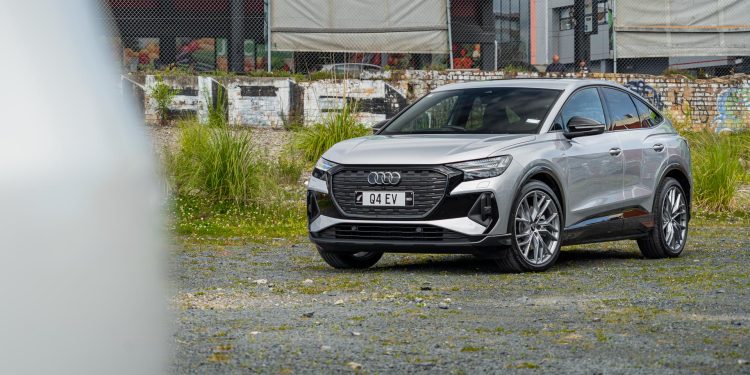2023 Audi Q4 Sportback 50 e-tron quattro S line review
Words: Kyle Cassidy | Photos: Isaac Western
Audi’s electrification drive ramps up further with the arrival of the Q4, its most affordable EV yet. But is it special enough to warrant the premium?
The Audi e-tron range continues to bloom, the new Q4 now the most affordable way to get a set of electrified rings in your garage. That is, if you opt for the entry model.
The line-up includes the regular Q4, with a more traditional SUV bodystyle, and the Sportback with the racier looking roofline. The Q4 starts at $99,990 for the 40 e-tron Advanced while the dual-motor 50 e-tron quattro S line is $126,990.
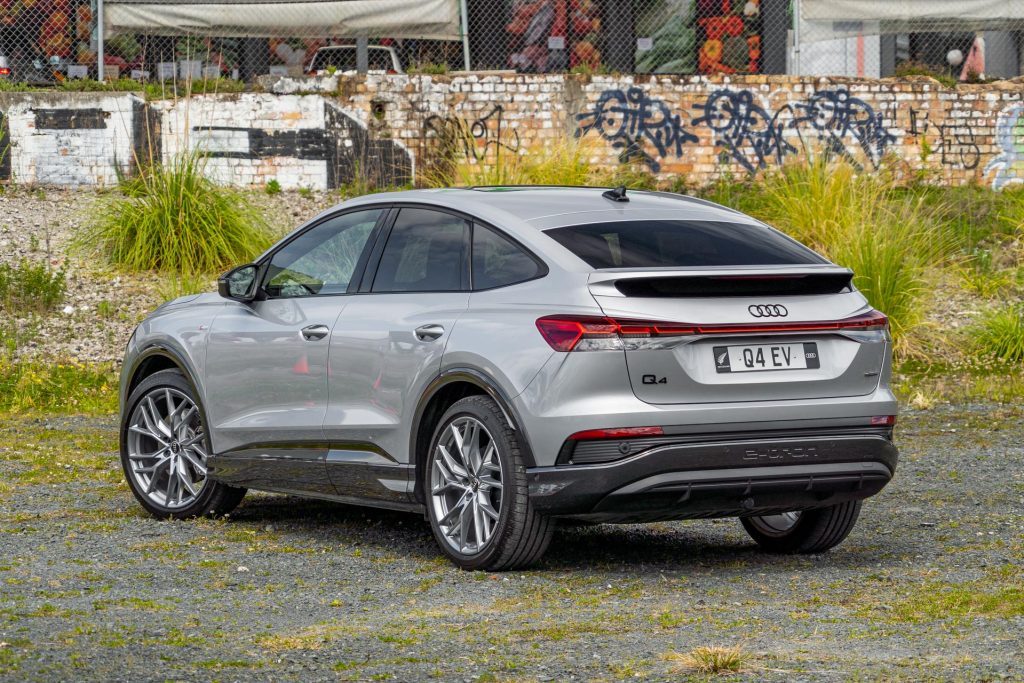
The quick witted among you will realise we have the Sportback here which, in 40 Advanced guise costs $103,990, while this is the 50 quattro S line at $130,990.
Q4 is Audi’s take on the MEB electric platform from the VW group, which is also used by the VW ID.4/.5 and Enyaq here. So far, Audi is the only one to offer a dual-motor variant but VW will have the GTX version of the ID.5 here next year.
The Q4 is the most expensive of the lot, but that’s the way of the luxury hierarchy, the same way an A3 is more expensive than a Golf or Octavia, despite common origins.
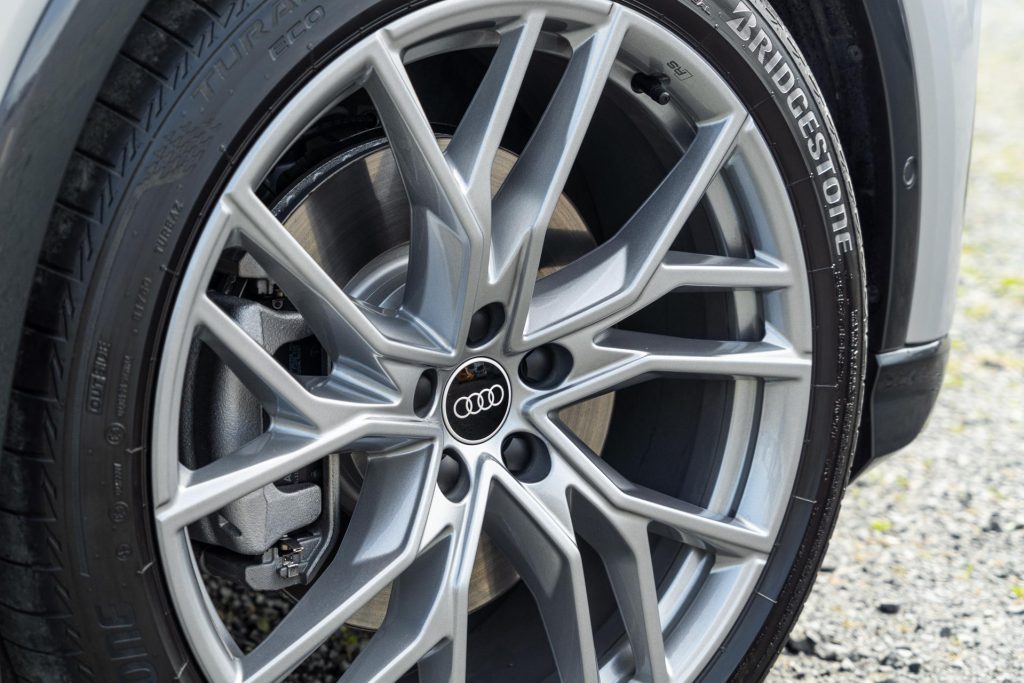
Specs for the 50 quattro equate to an output of 220kW and 460Nm enabling the 0-100km/h sprint to be dusted in 6.2sec.
They reckon you’ll get up to 493km of travel thanks to its 82kWh (76.6 net) battery. For comparison’s sake, the single-motor RWD 40 model has 150kW/310Nm and a range of up to 522km (0-100km/h 8.5sec), sharing the same battery pack.
The extra money asked also nets the S line grade with its additional specification.
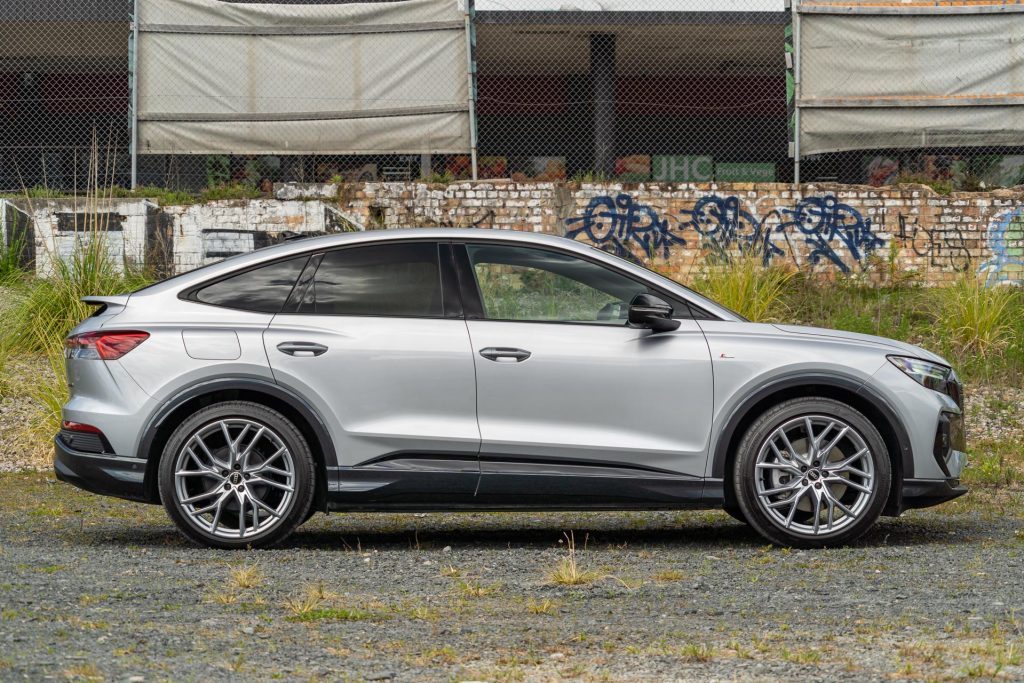
Stylish yet practical
It’s been a while coming; Audi’s first compact e-SUV has been on sale in Europe since 2021, and so it won’t be long before a facelift model happens along.
Despite this, the Q4 looks fresh and recognisably Audi while the new body pressings in the front and rear quarters look good, helping emphasise the short overhangs.
Most new cars nowadays have a light signature via their daytime driving lamps but the Q4 allows its driver to select from four designs to help mix it up.
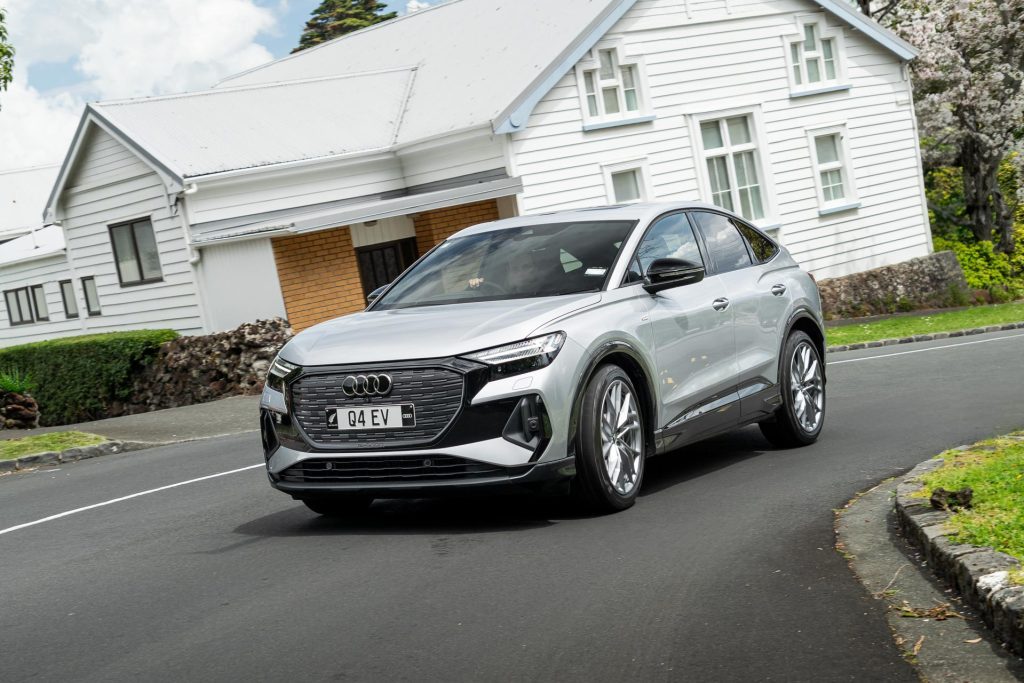
At 4.59m long, it might be a stretch to describe it as compact but this is urban friendly and spacious inside. While our front passenger felt a bit hemmed in by the design of the dashboard, there weren’t any complaints from those in the back.
Here there is decent leg room while the flat floor gives the occasional piggy in the middle more space as well. Taller types will have their mohawks squashed by the sloping nature of the roof but entry isn’t too bad for one of these coupe-cum-SUV offerings.
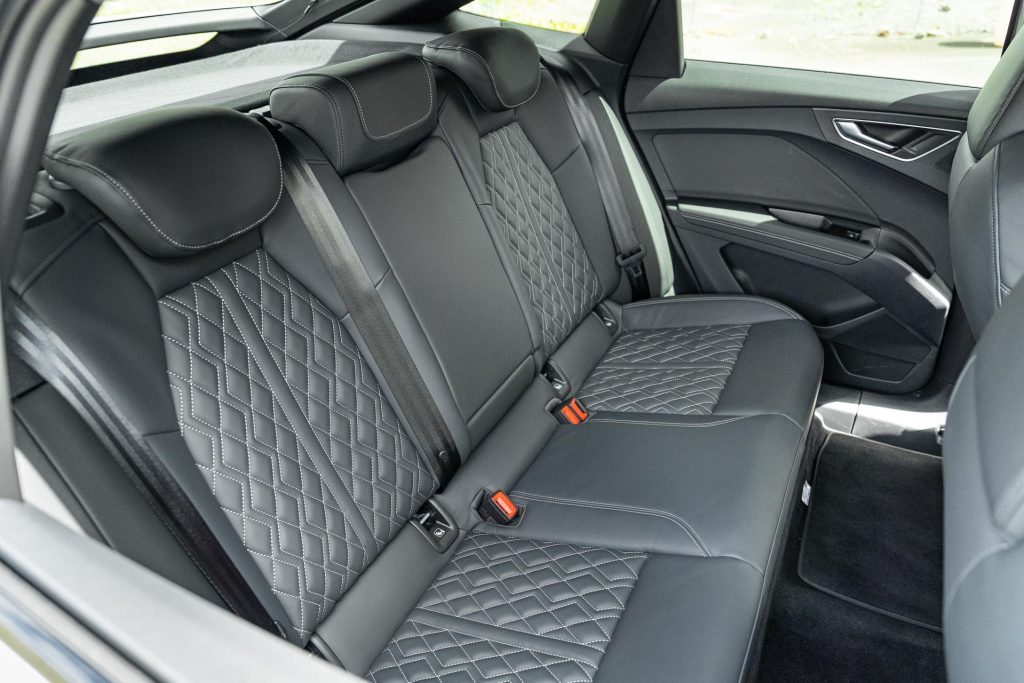
There are two USB-C outlets, ventilation controls and Isofix points.
The boot is quoted at 535L, so plenty for the task. The floor can be lowered, or the space underneath used for cable storage.
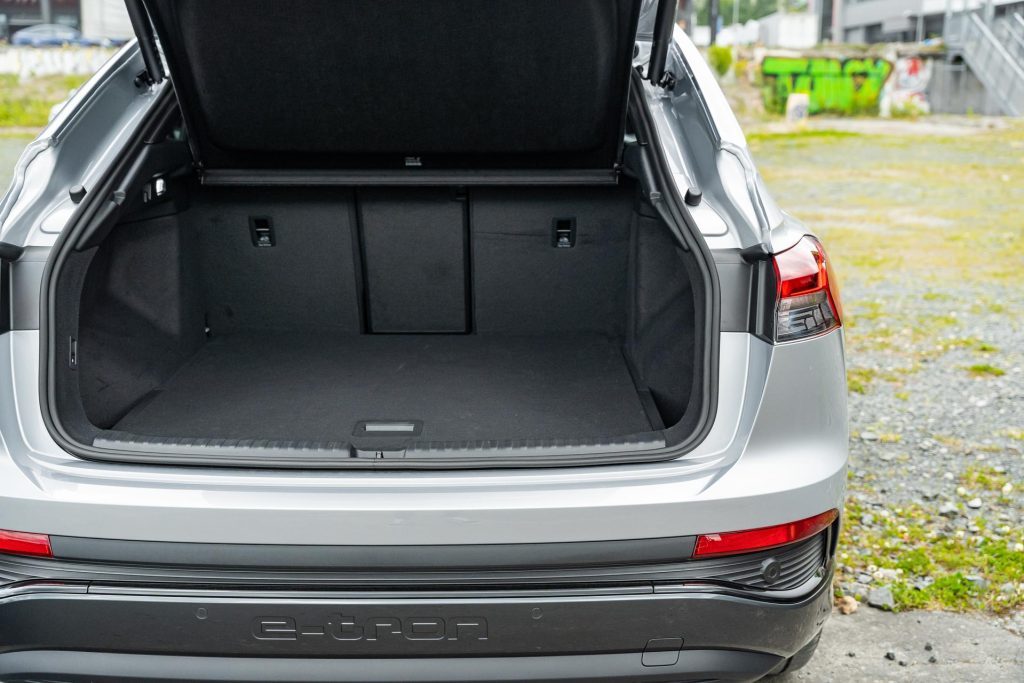
While there are no remote levers to flatten the rear seat backs (split 40/20/40), there is a button to release the standard-fit tow hitch, a Euro-type hook appearing from behind the rear bumper.
This Q4 quattro is rated to pull up to 1200kg braked, 200 more than the RWD models.
Premium enough?
Audi owners moving from combustion bangers should appreciate the extra cabin storage; we like the novel bottle holders incorporated into the door handles.
Some of these cubbies aren’t lined however and you only get half a glovebox. There’s perhaps too much plastic in the cabin, but the displays should distract the eye.
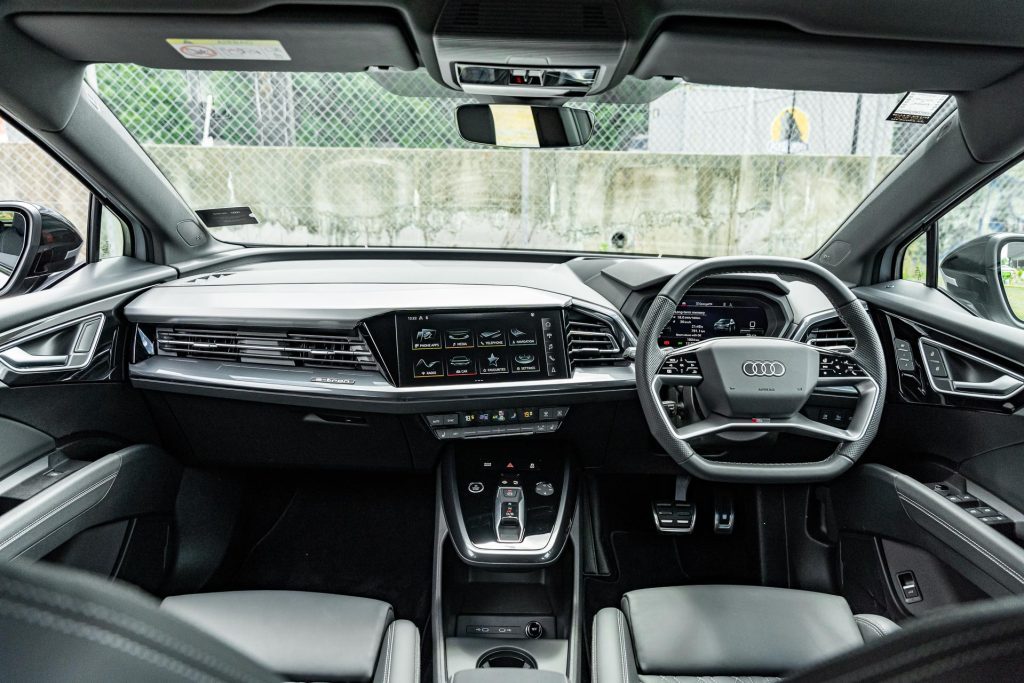
Speaking of, the instrument binnacle serves up different views to ensure you’re across what’s going on. The infotainment system is easy to navigate but the action could be quicker. Its voice control understood us well enough although it didn’t seem to be the most up-to-the-minute version of binary help.
The head-up display adds some augmented features, such as highlighting the lane markings it thinks you are about to cross, and also projecting directions at intersections when using the sat nav.
We’d imagine some would find these ‘overly distracting’ while the ‘seamless touch surfaces’ of the steering wheel controls might raise the blood pressure too. But these haptics work fine, as do the actual buttons retained for the air con.
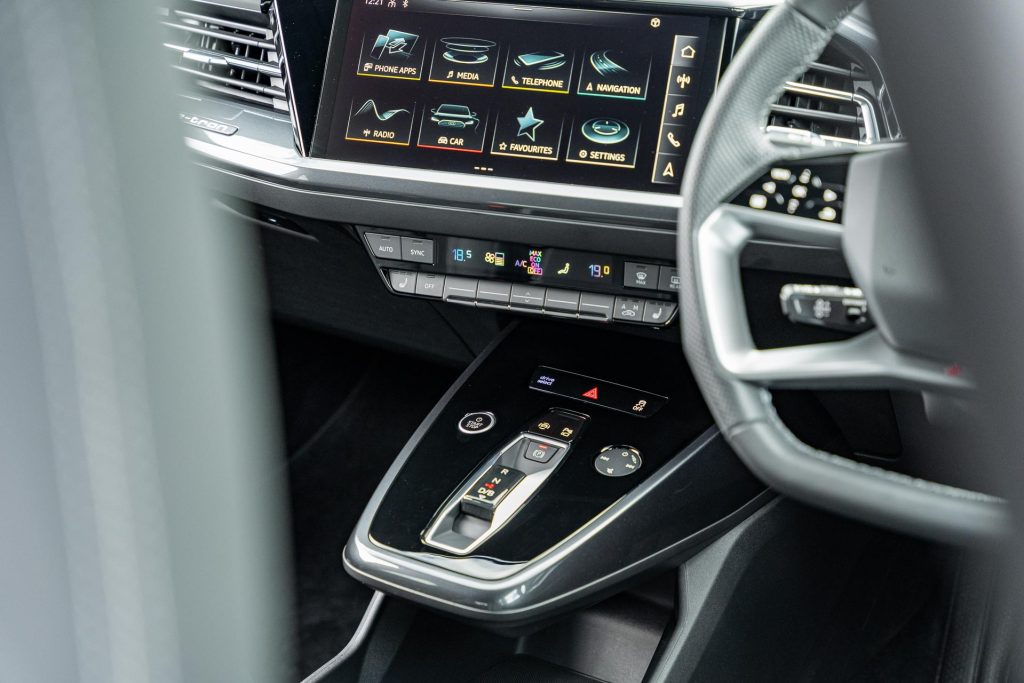
Oddly, there is a start button and yet the Q4 is ready to go when you jump in; just select the gear and go. We guess it’s there for those that need to have something to switch off. Otherwise, just hit P (for Park) and get out.
An urban Audi
The steering assistance is light at city pace, and quick too, though the squared off wheel feels odd on the turn. The actual turning circle is okay though not as tight as the RWD ID.4’s.
It’s quite hard to judge the extremities of the Q4 from the driver’s seat (S line items well bolstered if a little firm) but you can summon the surround view camera easily to help out there, even if the 360 degree imaging should be better for this price category.
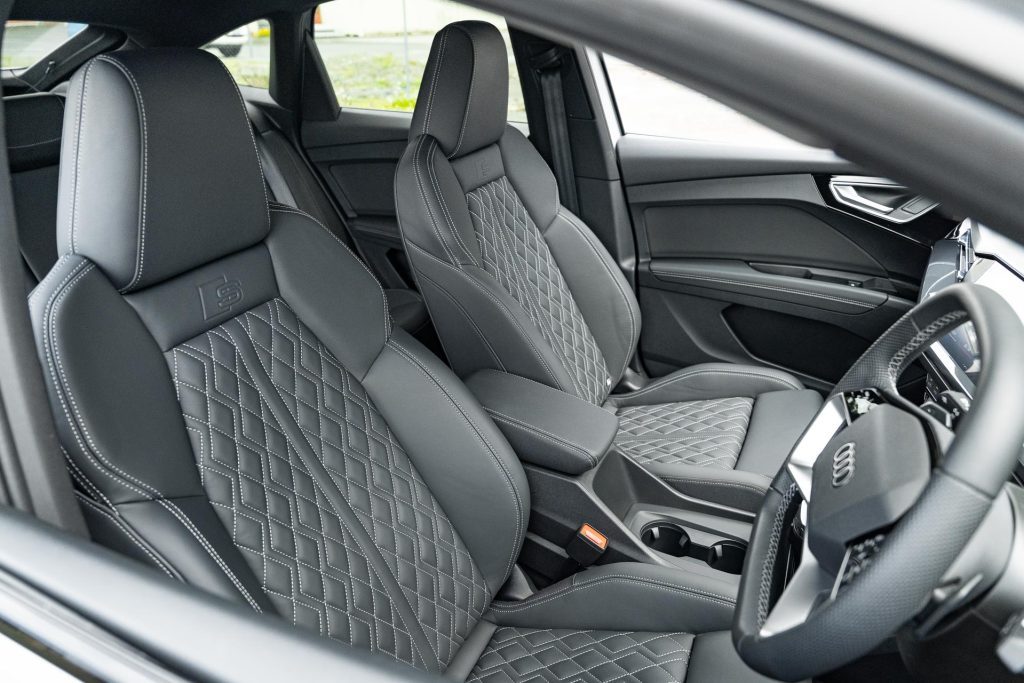
I like the brake regen set up here. Select D and it’ll coast when you’re off the accelerator until you either brake conventionally, tap the minus paddle behind the wheel to add motor regen (there are three levels to select from) or the sensors detect traffic in front and it magically starts to slow.
As I like to fiddle, I’m all for the paddling and especially like how the regen resets to nil when you get back on the accelerator.
There’s no one-pedal mode but it’s not missed, while you can opt for a B mode which has a reasonably strong regen effect whenever you lift. The brake pedal action is okay at town speeds too, and not snatchy when parking.
Drive select shuffles through the drive modes, a couple with an electric bent such as Efficiency and Range (reduced max speed, air con to eco and recuperation to auto) along with the usual Comfort and Dynamic.
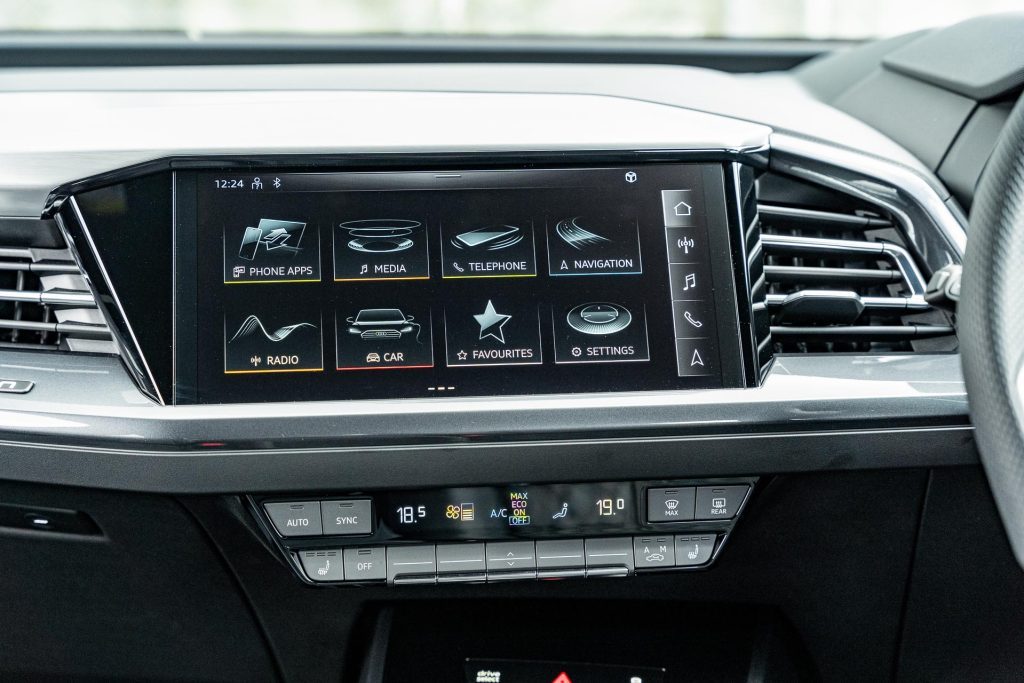
We left it mainly in Auto, a self-sorting mode adapting to your driving style. Being the S line model, this rolls on sports suspension that lowers the ride height and adds some starch to progress.
These are not of the adaptive type, nor is it offered as an option. The ride isn’t too bad considering the 21s, though you will feel the bumps, particularly the larger ones.
Efficient and energising?
Energy consumption tracked in the 18kWh/100km range overall, but with two motors to feed, it can get hungry.
During the more vigorous part of our time behind the wheel, consumption peaked at 24kWh/100km. More sedate urban roaming requires much less, in the 14-15kWh/100km zone.
When we collected this, the battery was at 80 per cent with 385km to empty showing. On a 75kW DC charger, 20 minutes added 25kWh, moving the battery from 30 per cent to 62 and the range estimate from 108km to 241km. Its max DC charge rate is 135kW and 11kW on AC.
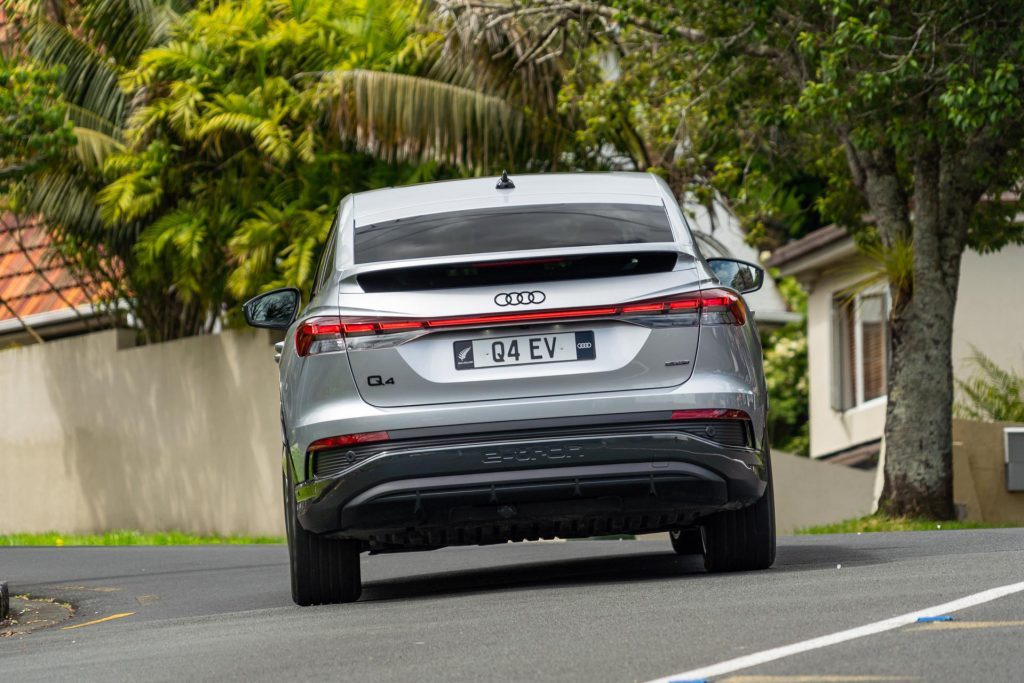
To help conserve energy, the front motor is used only when needed, but there’s no delay in delivering power and traction when you floor the accelerator.
This gets up to 50km/h quick smart, and delivers the usual instant surge of torque when required to make the gap.
As a drive, it’s very competent, though not quite engaging. With motors at each end it squirts off the bends, and the body roll and 2.2 tonne mass are well contained by those sports suspenders.
These are helped by the electronic dynamic aids nipping the brakes and limiting torque to help neutralise the understeer, though this is not done as seamlessly as it could be.
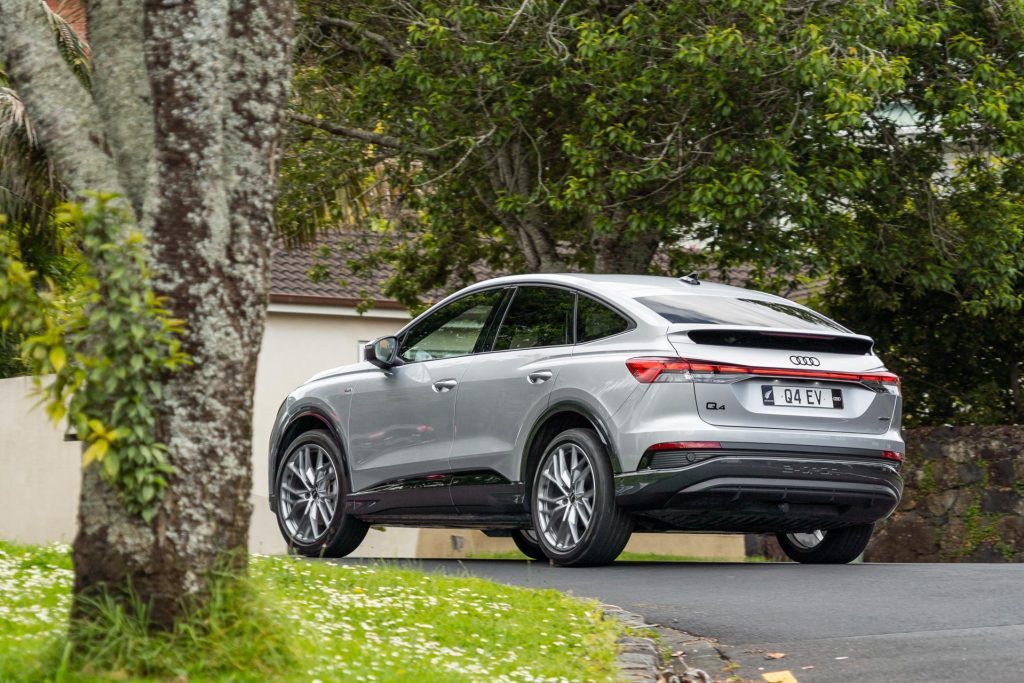
The steering adds weight at speed to help better negotiate the bends, though feedback is subtle. The brake pedal doesn’t feel amazing during hard inputs but it hauls up well ultimately.
At a touring pace, it’s better to use the paddle-initiated motor regen.
But worth it?
Most liked the look of this, and it’s a spacious, easy to drive vehicle, with all the conveniences. The battery size and range are ample for most buyers too.
However, given this isn’t an especially dynamic powerhouse, you might be just as happy with the 40 model, saving $27k, yet still getting the look and prestige.
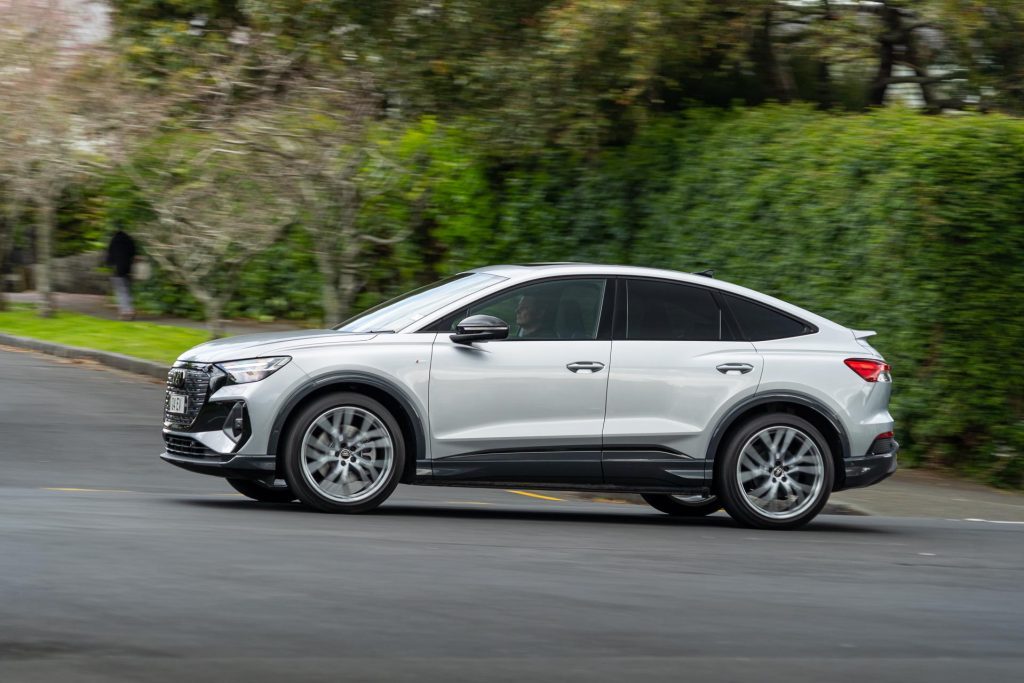
And if those two attributes aren’t such a priority, then the VW ID.5 can be had for under $80k, the powertrain identical.
Don’t want to go full EV yet? We were impressed by the Q5 TFSI e, the $115k plug-in offering similar performance and up to 57km of electric driving for the city.
| Model | Audi Q4 Sportback 50 e-tron quattro S line |
| Price | $130,990 |
| Clean Car Discount | Neutral – $0 |
| Motor Output | 220kW/460Nm |
| Battery | 82kWh |
| Range | 493km |
| Drivetrain | Single-speed auto, AWD |
| Energy Use | 19.7kWh/100km |
| C02 Output | 0g/km |
| 0-100km/h | 6.21sec |
| 80-120km/h | 4.12sec (117m) |
| 100-0km/h | 35.77m |
| Stability systems | ABS, ESP, TV |
| Safety | AEB, ACC, BSM, LDW, RCTA, ALK, AHB |
| Luggage capacity | 535 / 1460L |
| Tow rating | 750kg (1200kg braked) |
| Service intervals | 3 years, 150,000km |
| Warranty | 5yrs, 150,000km |
| ANCAP rating | not yet rated |
| Weight | 2205kg (claimed) |
This article first appeared in the November 2023 issue of NZ Autocar magazine


